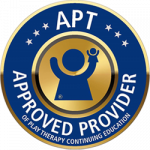Training Description
This play therapy training is offered Live In-Person for contact hours and Virtual via Zoom Platform for non-contact hours.
One of the most powerful and dynamic factors in play therapy is the relationship between therapist and child. Transference and countertransference can contribute to growth or a resistance to change in play therapy. Following Polyvagal Theory, the therapist lends his or her feelings, focus, and environment to the child during play therapy, which can facilitate the healing environment required for post-traumatic growth. Each child and therapist brings themselves, past experiences with play, and their own reactions to trauma experiences into the play therapy space. The therapist must be in tune with factors that may constrain the client’s ability to fully express themselves through play and heal, which can lead to a stuck feeling. If the child’s needs can be authentically and safely expressed, these same factors can be the mechanism that enriches the play therapy experience and lead towards further recovery and integration. Play therapy strategies will be selected for remaining present and emotionally regulated in order to create a safe, co-regulated environment rich for post-traumatic growth in play therapy.




